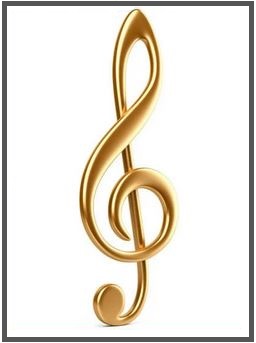 PDF: Instructions to set up note identification app at MusicTheory.Net
PDF: Instructions to set up note identification app at MusicTheory.Net
The Musictheory.net note ID app works from their webpage. There’s nothing to download or install.
If reading is important to you, then you should find your own strategies for improving your reading. Instrument method books won’t give you enough reading practice to become a proficient reader. Method books teach you how to play, and how to read. But there’s a big difference between knowing how to read, and getting comfortable with reading.
“Reading” and “sight-reading” are both based on identifying notes on the staff, and reading rhythms. “Sight-reading” means reading music you’ve either never read before, or don’t remember reading before.
The popular instrument methods are all good, but no one book is enough. If you want to get good at reading, then you need to supplement your instrument methods with other books, programs, apps, etc. Identifying the notes on the staff and reading rhythms are two separate mental steps. When you learn how to perform those two steps at the same time, then you’re reading music.
Apps are a good way to practice these two core skills separately, and in combination. Imaginative programs are helping to bring music education into the computer age. For instance, I recommend the reading exercises at MusicTheory.Net. Their note–identification and other reading exercises have made my life as a teacher much easier.
I use their note ID exercise with kids who have never read music. I tell the kid, “This is a really simple computer game. It’s like a game for a four-year old. Spend a little time with it, and you’ll know how to read all your notes.” Right away, the kid isn’t intimidated anymore. No eight or ten-year old kid is intimidated by a game for a four-year old. If anything, I’m telling them not to get bored too soon. Kids usually like the “game” right away, because it’s easy, and because they can tell where it’s leading – they’re learning to read notes.
I ask if any of their friends at school are learning to read music. I tell them, “Your friends are learning to read music the hard way. They’re all working really hard to learn things that you’re learning the easy way.” I tell them, “This is easy. Tell me the minute that any of this gets hard.” I ask them every so often, “Is this easy?” They usually answer, “Yes.”
If you’re setting up a note-ID app for a kid, start with only 3 or 4 notes. Give them time to thoroughly learn just those notes. It may take several sessions over days or weeks. Add only one note at a time, then practice naming that set of notes.
The goal is learning the grand staff well enough that you can quickly name notes at random. It takes a lot of practice over time. It doesn’t necessarily reward consistency. Just work it in when you find the time.
Expect to forget and relearn this material several times before it really sticks. Don’t get frustrated. Some people pick it up right away, but reading music is a complicated and abstract mental task. I recommend that you name only natural notes at first. Turn the option for accidentals (sharps and flats) to “off.”
Online flashcards are a big part of learning to read the easy way. Don’t make reading harder than it is. That means don’t rush the process. It doesn’t take long to see the benefits of systematic reading practice, but you have to stay at it for a while. You’ll see a big improvement in just a few months, with a minimum of hassle and headache. You’ll be reading better than someone who spent the same amount of time reading from a standard method book.
It helps if you alternate between reading online flashcards and reading notes on paper. Kids who are good at reading flashcards also need to practice reading notes on paper, because they’re a little different from one another.
Key signatures are difficult for beginning readers to keep up with. It’s a good idea to learn to read accidentals separately. Take the time to get familiar with accidentals before you start reading key signatures.
Kids will make a real effort to solve problems when you present them as games. They’re also good at figuring out how to combine mental tasks. For example, a kid who can use a stylus to press the correct note name, so they advance to the next note, can generalize that skill to playing notes on the guitar, bass or piano instead. Showing them where those notes are on the guitar, bass or piano is a separate step.
The good folks at MusicTheory.Net provide this and other valuable learning resources for free. I have contributed to them. If you use their online apps, you might see your way clear to donate something as well, so they can keep up the good work.
I take a multifaceted approach to reading music. I start my guitar students with chord charts, which teaches them how to count measures. This important concept helps with learning to read notes. One reason counting measures helps you learn to read is it gives you practice at keeping your eyes moving across the page. (This is not the same thing as when teachers instruct their students not to stop when they make sight-reading mistakes.)
“Reading music” is a relative term. It isn’t an “all-or–nothing” proposition. A lot of rock players can read staff notation a little. They can identify the note names on the staff, though usually not fast enough to sight-read. They usually memorize and imitate complex rhythms. As we’ve already said, most rock and country musicians learn all of their rhythms by ear, and they play rhythms from memory.
© 2019, 2020 Greg Varhaug